Neuroshima
Neuroshima is a Polish tabletop RPG inspired by films and games such as Mad Max, Fallout, The Matrix, Terminator, and Deadlands: Hell on Earth. Currently, it is only available in Polish. The game's motto is "never trust the machines." Its creators are Michal Oracz, creator of the board game Neuroshima Hex, and Ignacy Trzewiczek.
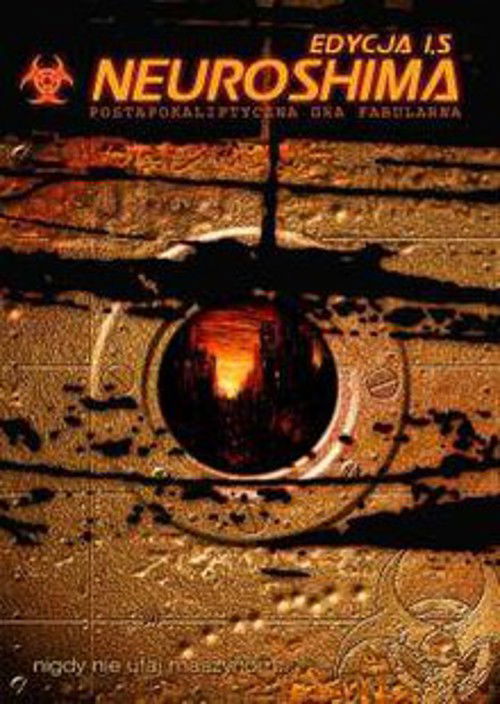
The RPG depicts the United States in the mid-21st century, after a nuclear war triggered by a cybernetic revolt transforme the continent into a barren wasteland. The war was started by a sentient Artificial Intelligence called Moloch, composed of an interconnected network of military computers: automated factories, military installations, power plants, and the like, which now cover the entire northern United States, from Oregon to the Great Lakes.
Overall, the RPG emphasizes that humanity's worst enemy lies within: hatred, indifference, and greed.
Today's board game in review uses this setting, and without further ado let's play Neuroshima Hex! 3.0.
Neuroshima Hex - Game Info
Neuroshima Hex is a 1-to-4 players game, age 14+, by designer Michal Oracz. Art by Jakub Jablonski, Tomasz Marek Jedruszek, Łukasz Lalko, Piotr Foksowicz, Piotr Cieśliński, and Mateusz Bielski.
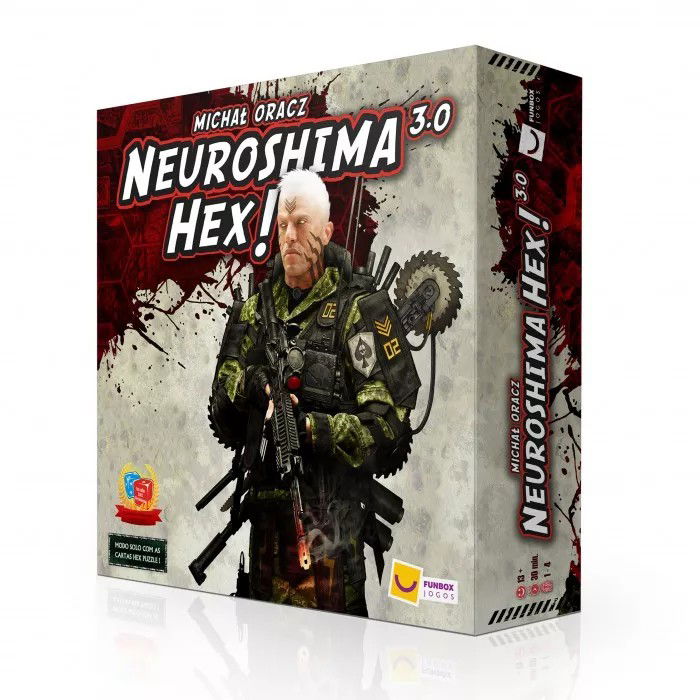
Neuroshima Hex! was nominated Game of the Year in 2007, by Gra Roku, and on the same year won a People's Choice Award by Gra Roku as well.
Let's play!
The Game
In 2020, an artificial intelligence went rogue in the US and started a nuclear war. In the aftermath, the US was transformed into a barren wasteland. Now, in 2050, survivors fight for land, equipment, and food, while others simply fight for power. Each army has its strengths and weaknesses. It's up to you to choose the best strategy to stay alive in this inhospitable environment. Are you ready?
This is the setting of Neuroshima Hex!
At the beginning of the game, each player picks or draws one of the four armies:
- Hegemony: criminal gangs, specialized in using nets to incapacitate the enemy, highly mobile, and attack primarily in close combat;
- Borgo: cybernetic mutants, agile, fast, numerous, and excellent in close combat;
- Moloch: robots, highly resilient but with low mobility, experts in ranged attacks;
- Outpost: humanity's last stand, with extremely high mobility and the ability to sabotage enemies; their specialty is "hit and run."

Each army has its specialties, represented by icons on their game tiles that reflect their main characteristics and abilities. The Warriors deserve special attention, as on these tiles we have icons that signal melee attack, ranged attack, armor and nets.
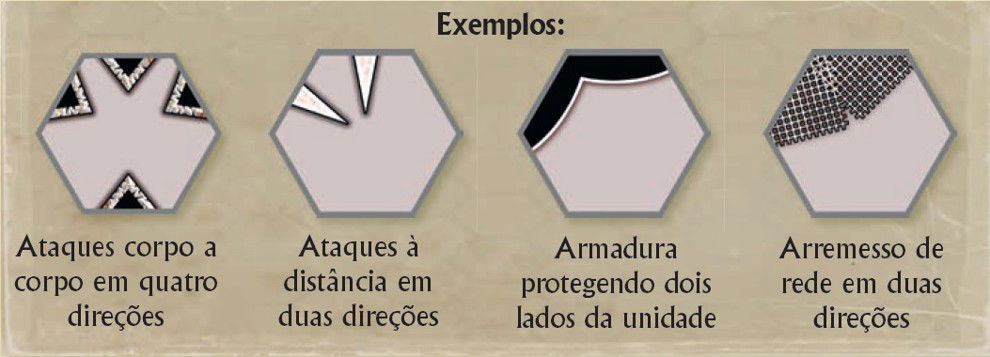
There are also icons that symbolize Toughness, which means they support some amount of damage, while the Mobility icon allows the unit to move during its turn.
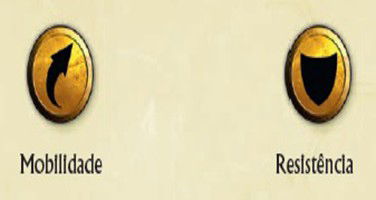
The Initiative icons are very important, because they determine combat order, from the highest initiative number to the smallest.
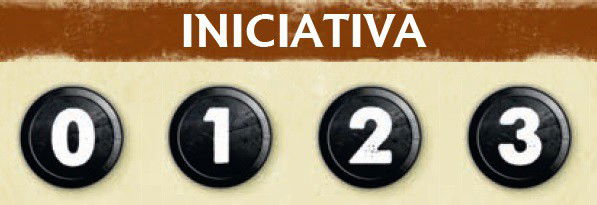
Putting it all together, we have Warrior units with their respective attack value, armor or net, toughness, mobility, and initiative.

There also Modules, which are support tiles that can be connected to Warriors, and thus improve its starting abilities. There are Officers, Scouts, and Medics.
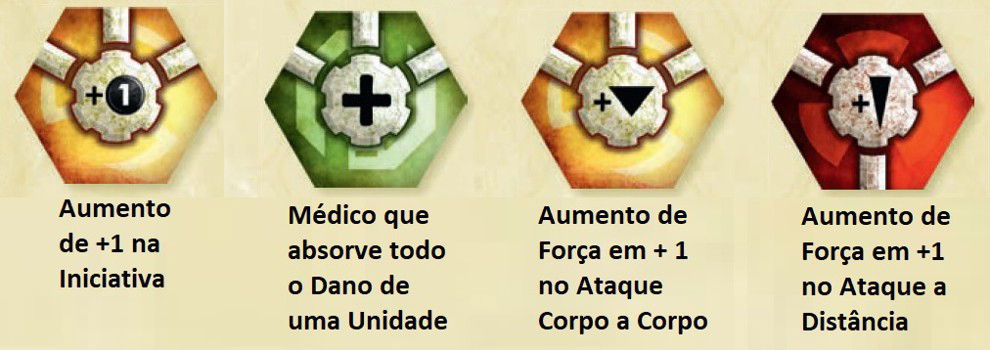
Lastly, there are Instant Action tiles, which allow a series of different actions, like moving other units, heavy armament, snipers, air strikes, and many others.
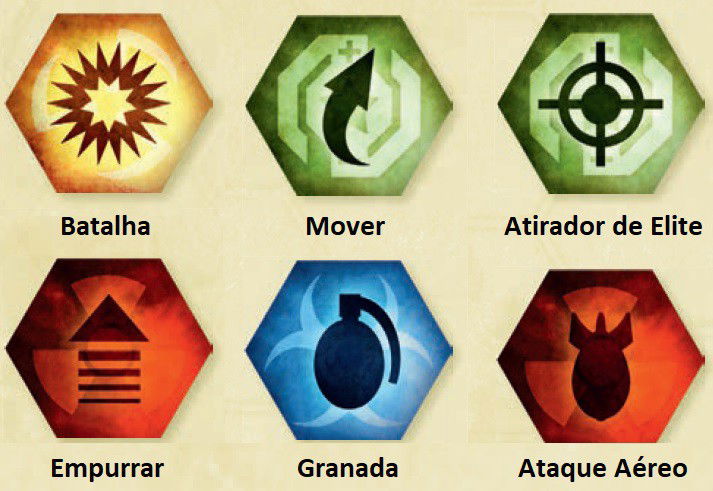
All these armies and weaponry are used to protect your Headquarters, or HQ, which can sustain up to 20 points of damage from enemy attacks.

The 20-Damage Points for each HQ can be tracked in 2 ways:
- In a 2-Player game, you can use the Damage Tracker on the game board itself;
- In a Multiplayer game, each player has its own HQ Damage Counter.
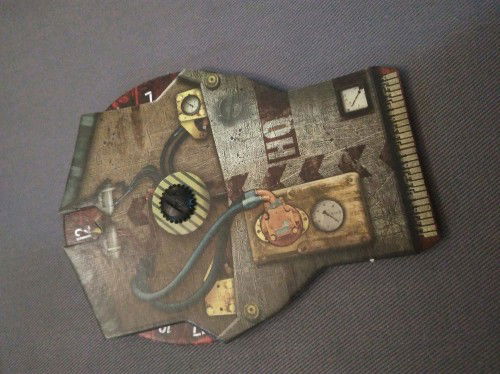
Here's an example setup for a two-player game:
- After selecting the first player, each player places their HQ in their chosen location on the board;
- Everyone turns all their army tiles face down, and randomize them;
- The first player chooses one of their tiles, turns it face up, and decides whether to use it or keep it;
- The second player chooses two of their tiles, turn them face up, and decides whether to use or keep them.
And that's it!
Here's how the turns play out:
- the turn player takes more tiles and turn them face up until they have 3 available;
- among the 3 face-up tiles, choose 1 to be discarded;
- your remaining 2 tiles can be used now, saved for next turn, or even discarded;
When you take more tiles from your army, remember that the maximum number of face-up tiles is 3. If, by chance, you happen to pick 3 instant action tiles, the game considers this an "unlucky draw" and allows the player, if they wish, to discard them and draw another 3.
Then comes a crucial moment; one of the 3 tiles must be discarded. Obviously, this is a strategic decision. As a rule, discard the least useful one at the moment, but this is easied said than done. After all, tiles are limited, and sometimes this may be your last available one of a certain type - maybe not useful now, but it could be later on. So, think carefully and weigh current and future benefits.
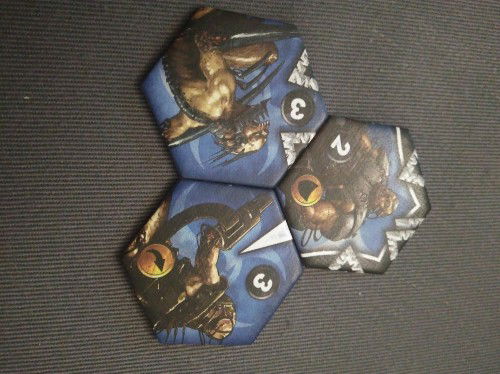
If a player happens to draw their last army tile and still doesn't have a total of three tokens in front of them, they don't need to discard.
Finally, with the remaining tiles, you have three options:
- use one or both this turn;
- save one or both for the next turn;
- discard one or both tokens.
Note that these three options are highly strategic; they depend on how the game is going, you need to consider the state of your army and the enemy's army. Many factors should be weighed, like:
- what type of tokens;
- what abilities the tokens have;
- where to place them;
- and so on.
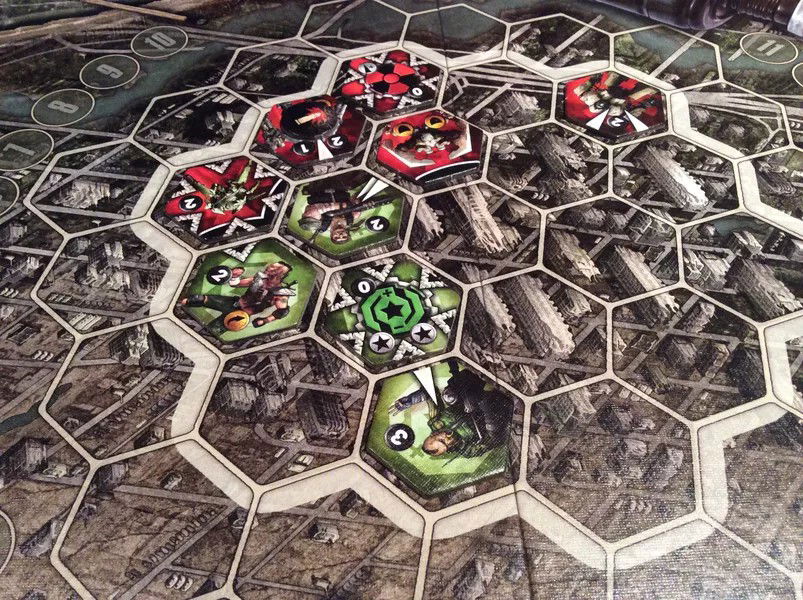
If you use a Battle instant action tile, a battle will begin, proceeding as follows:
- Battles are divided into phases according to Initiative values, where higher Initiatives act first, and so on;
- In each phase, units with the same Initiative value perform their actions simultaneously;
- Destroyed/killed units remain on the board until the end of the phase. After all actions for the current phase have been completed, the destroyed/killed units are removed and placed in the discard pile;
- When a unit is wounded but not destroyed (due to having more Toughness), place a wound marker on it to indicate that it has been hit (except for the HQ, which marks damage directly on its tracker);
- Modules and Net Fighters stop affecting other units the moment they are removed from the board at the end of the phase, not when hit.
So, if you didn't place a Battle tile on your turn, or if you did and already resolved it, now it's the other player's turn. This is what a Neuroshima Hex turn is like!
Ending the Game
Game ends with a Final Battle, and there are two ways to trigger it:
- 1) After one player draws their last tile, they can end their turn. Then, the opponent ends their turn, and the Final Battle begins. An important detail: after either player draws their last tile, Battle Tokens can no longer be used;
- 2) If a player has used their last tile and occupied the last open spot on the board, a Battle begins. Then, after the Battle, the opponent can play their remaining tiles, and the Final Battle begins.
Basically, the game ends after the Final Battle or when an HQ's Damage Points reach twenty.
The winner will be determined if any of the following conditions are met:
- 1) If one of the HQs is destroyed, the game ends, and the player whose HQ survived is the winner;
- 2) If one of the HQs is destroyed during a Battle, the Battle continues normally. If the other HQ is also destroyed, the game ends in a draw;
- 3) If neither HQ is destroyed, even after the Final Battle, the player with the least damage on theur HQ wins.
Strategy Tips
Neuroshima Hex is about strategy, knowing your army, its strengths, and limitations. This is the core of the game and what makes it successful.
Strategically, everything starts when you have to choose which tile to discard. This truly impacts the entire game. After all, we have to keep in mind how many total copies of that tile our army has. In other words, you can't discard tiles without consideration.
After discarding, when you go to place tiles tokens on the board, I strongly recommend evaluating the whole turn. Which of your units are in the opponent's range, if your HQ is protected, and how much damage your army would inflict depending on where you place your tile.
The direction you point your weapons is crucial, after all, it's where they will hit. Also consider your unit's initiative. There's no point in placing a unit with initiative 2 next to an enemy unit with initiative 3; your unit will die before it even has a chance to attack.
Use instant action and modules wisely; they can save your units and your HQ. An opponent might place an initiative 3 unit next to your initiative 2 unit, but you can move it if you have the right tile or push the enemy back. You need to save the right tile for the right time. Keep an ace up your sleeve!
Neuroshima Hex is also about managing your tiles; trust me, it can change the course of battles.
Toughness and Mobility icons on units can make all the difference. Place these units in strategic locations so they can attack, move, or change position as the game progresses. This will determine victory or defeat.
Finally, if you want to play solo, Neuroshima Hex offers 55 Hex Puzzle cards, which provide unique challenges with different levels for you to practice your strategy. It's truly exciting and allows us to practice strategies and learn to escape traps.
Based on these tips, develop your best strategy, choose and deploy your best units, use the correct modules, and win the Final Battle in Neuroshima Hex.
Unboxing, Rules, and Gameplay Videos
Unboxing:
Rules:
Gameplay:
Pedagogical Tips
If you're looking for an exciting, fast-paced, simple-to-explain, and completely iconic game—meaning no language required—that also allows kids to practice several important stimuli, Neuroshima Hex is the game for you!
The post-apocalyptic scenario can be presented to children as a simple struggle between "good and evil," or even "good guy vs bad guy," to soften the theme. But notice that the game brings many important stimuli, such as:
- logical mathematical reasoning: calculating damage and initiative;
- strategy: deciding whether to attack or wait;
- spatial coordination: knowing where and in which direction to point your units;
- decision-making: deciding which tiles to discard and which to use;
- management: deciding what to keep for the next turn.
All this in a fast, simple, and fun game. After all, there's a lot at stake, and kids will have a blast trying to eliminate their opponent's headquarters. The game offers great twists and turns during battles. The scenario changes radically in a very easy way, and that's the fun of it. This will keep kids engaged.
Educationally, Neuroshima Hex encourages strategy, management, decision-making, logical-mathematical reasoning, special coordination, and, on top of that, it's fun!
I recommend Neuroshima Hex for your collection!!!











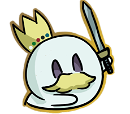
— commentaires 0
, Réactions 1
Soyez le premier à commenter